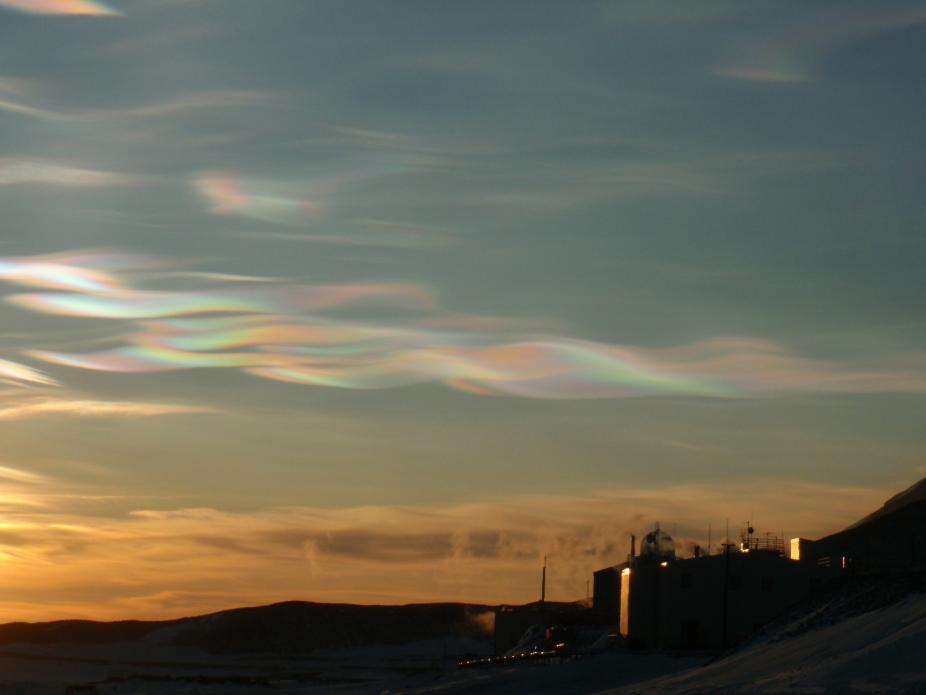Research finds sulfate geoengineering would be only a temporary fix for climate
A collaborative research team from Cornell University, Indiana University, and NCAR has found that sulfate geoengineering would be “at best, a temporary fix,” according to Cornell postdoc Dan Visioni, and that reducing the amount of CO2 in the atmosphere is the only long-term strategy for preventing the harmful effects of climate change.

Polar stratospheric clouds, such as those shown here, highlight the region of the atmosphere that Visioni and his colleagues are studying to try to understand how aerosols might counteract the warming effect of greenhouse gases.
Visioni is the corresponding author of “Reduced poleward transport due to stratospheric heating under stratospheric aerosols geoengineering” in AGU Geophysical Research Letters (link). Co-authors from Cornell include Professor Doug MacMartin and PhD student Walker Lee, Indiana University Professor Ben Kravitz, and NCAR/CGD scientists Yaga Richter and Isla Simpson.
“Yaga and Isla helped us a lot for this particular research, lending us their expertise with the functioning of the model and of atmospheric dynamics,” Visioni said. He added that NCAR/ACOM project scientists Simone Tilmes and Mike Mills provided “invaluable support and assistance” while running most of the CESM1 (WACCM) climate simulations on Cheyenne. Most of the data analysis was performed on Casper using NCL or Python. The largest analyses were done using the Geoengineering Large Ensemble (GLENS), a collection of 21 ensemble members, run for 80 years each, from 2020 to 2100.
Visioni said the simulations helped the team understand “how the planet might be affected if sulfate aerosols were injected into the stratosphere in order to counteract the warming effect of greenhouse gases, at least temporarily while we reduce our emissions. We are trying to understand all the ways in which this sulfate in the stratosphere would interact with atmospheric dynamics and chemistry, and ultimately the effects that it would have on the surface climate.”
He added, “Our research indicates that the ability to cool back down the planet using aerosols is limited, and after a certain point the side-effects start to be unavoidable. Thus it highlights that sulfate geoengineering would only be, at best, a temporary fix.”
When your own research makes news and you did some of your hard work on the Cheyenne or Casper systems, CISL would love to hear about it. You already acknowledge NCAR and CISL support when you publish journal articles. When your university, lab, or department sends out a news release or publishes a story on your own website, let us know about that, too. How? Mention @NCAR_CISL when you tweet about it, give us some feedback, or email us!